Hubris on Meta Quest 2 DEALS
Hubris has just launched on Meta Quest 2 and Pro, but it didn’t meet my expectations.
Hubris is a sci-fi game that launched on PCVR in December of last year. It has garnered praise for its visually stunning graphics, often praised as one of the best-looking PCVR games available. I have spent the past few days playing Hubris on my Meta Quest 2, and to be honest, I was really looking forward to the game as I was genuinely curious about how well the game has been ported, and in this Review, I will tell you everything you need to know.
The game transports the player into a captivating sci-fi world, where they assume the role of a recruiter for an organization called “OOO.” As you are making your way into your initial mission, your journey is unexpectedly disrupted by a commanding officer, calling you and your pilot Lucia to change your course and embark on a search for the mysterious agent Cyanha, who has gone missing during her mission on a nearby planet.
Table of Contents
The Graphics
In the opening moments of Hubris, we are presented with a glimpse of its beauty… or what it was meant to be. Okay, hear me out – considering the limitations of running this game on a mobile chip, achieving something visually stunning is not easy. That’s precisely why, in my rating, I categorize the Graphics as “Quest-wise” since, when compared to other games on the Quest platform, it holds up quite well.
While the graphics on the Quest are decent, it wouldn’t be fair to label them as beautiful by any stretch. To truly experience its visual phenomenon, you would need to play it on platforms like PSVR2 or PCVR. Unfortunately, in Meta Quest 2, right from the beginning, the game loses its primary advantage – the graphics. As a result, our attention must shift to other aspects of the game, which, to be honest, leaves us feeling somewhat concerned.
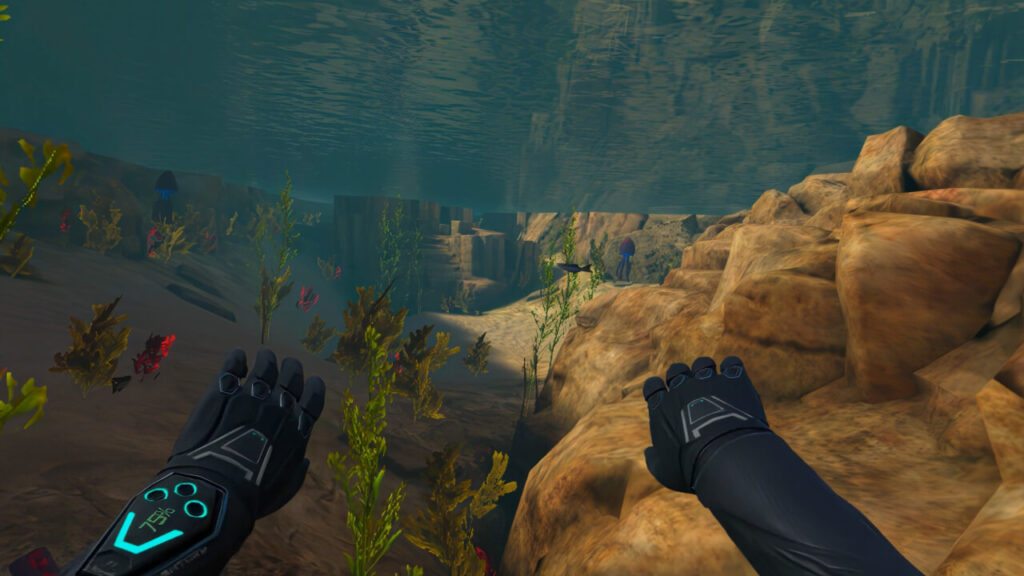
Swimming, Jumping, and Climbing
First and foremost, the swimming mechanics in Hubris are absolutely fantastic. This aspect received well-deserved praise in the PCVR version, and I’m happy to report that nothing has changed in the Quest port. The swimming controls are intuitive, enjoyable, and truly immersive. With the bonus of well-executed haptic feedback on the controllers, you’ll genuinely feel like you’re pushing through the water with every stroke.
When it comes to climbing and jumping in general, I, unfortunately, found it usually annoying and just not reliable. It’s not like it is unplayable – the feature is neither good nor bad. Jumping often requires an inrun to make a long-distance jump, and controlling movement in-air may feel janky at moments.
The climbing can be okay at best, predominatingly it feels like it is here casually. In some instances, I had to do the long jump, to make it to the other side – it required me to catch the edge of the platform I was supposed to jump on. While being in the air, it is annoying how difficult it is to catch that edge. It could be improved by developers, and I am looking forward to it.

Gameplay
Alright, let’s dive into the gameplay and Hubris’s core features. One aspect that players will mostly do in the game is… shooting! Unfortunately, the execution of it falls short in terms of satisfaction and enjoyment.
The combat in Hubris unfortunately lacks polish and feels obligatory rather than well-crafted. The player’s weapon can effortlessly eliminate half of the enemies with a single shot, and even the tougher foes, such as soldiers, can be taken down instantly with a headshot.
Hubris provides an option to wield the weapon with two hands, but the benefits for the player are minimal. The stability of the weapon remains largely the same, with the only advantage being the inclusion of a simulated pointer that aids in accuracy.
The effort required to utilize this feature is also simply not worth it. To wield the weapon with two hands, the player must maneuver their other hand close to the pistol grip, akin to the mechanics seen in Half-Life: Alyx. However, this process is executed very badly – the hand has to be in an uncomfortable and awkward position, making it challenging to effectively use a two-handed weapon in the game.
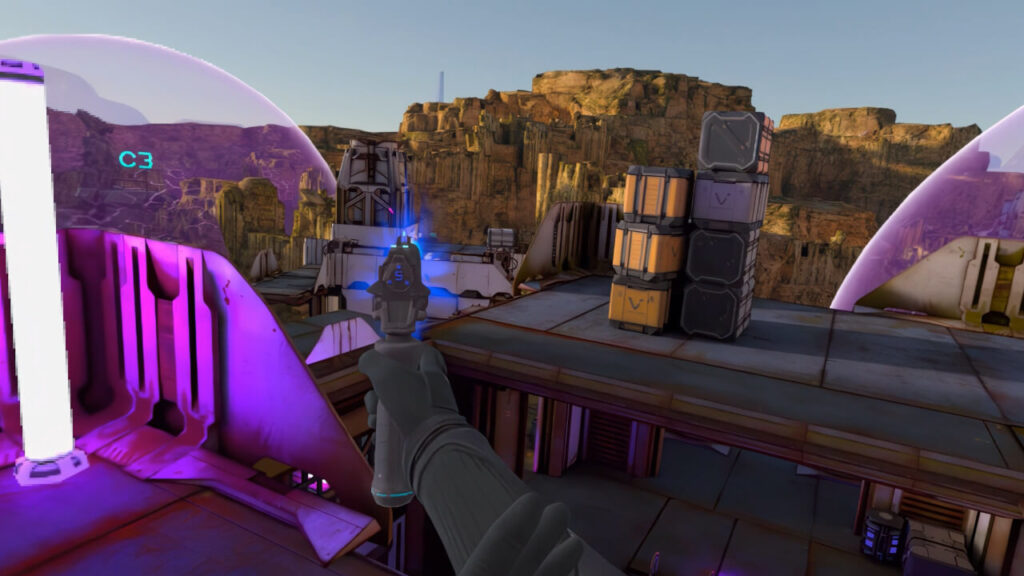
Additionally, the game features four different weapon types, with one exclusively designed for underwater use. The remaining three consist of a pistol, a shotgun, and an automatic gun – all of them are technically the same weapon. Players have the option to select their preferred gun from the weapon menu, triggering a very cool and well-animated transformation of the pistol into the chosen weapon.
Here’s the catch: the other weapons are rather weak compared to the pistol. It’s so overpowered that with maximum upgrades, it can kill nearly any enemy with just a few shots, and in some cases, even a single shot.
The next thing players will do rather often with their weapons is the reloading. This mechanic is unique – When the ammo runs out, the player must physically smash the magazine against their own body to reload. This is a very interesting concept, as it allows the player to use various parts of their body (not just hands) for reloading.
The problem is that the implementation of this feature could be done better. The magazine which slides from the pistol is often glitchy, making my second hand unattached from the weapon (which I found annoying), smashing the magazine back to the pistol sometimes just doesn’t work – it doesn’t feel reliable all the time. This mechanic could be done better, the concept is very intriguing, but at this point, I would rather choose the traditional reload system.

Moving on, let’s discuss the problem with the enemies. One of the major issues, despite their AI, is their lack of depth. When shot, they simply stand there as if nothing happened. There’s no trace of blood or any visual cue to indicate damage, only particles attempting to simulate the impact of the blaster striking a surface.
Enemies lack any sound or voices, leaving them devoid of any presence. They exist within the game without any background information or clear motives. In other words, they lack depth and simply come across as dull and uninteresting.
The AI in Hubris is not particularly advanced, which could be attributed to the limitations of the Quest platform. However, even in the PCVR version, the issue was quite similar. In most cases, enemies simply follow you and inflict damage when they get close. The only exception to this are drones and enemy soldiers, who exhibit more dynamic behavior such as taking cover, moving between locations, and ultimately shooting at you.
Crafting and Upgrading Weapons
The game manages to feature impressively large levels that retain their visual appeal on the Quest. This is a rarity among games on the Quest platform, and it deserves recognition. In these levels, you’ll come across various random items like scrap, crystals, and metal scattered across the map, which can be conveniently stored in your backpack. Players have the opportunity to utilize these materials for crafting and enhancing their weapons.
However, the entire crafting and upgrading process is tedious and unengaging, failing to motivate players to actively participate. In games like Half-Life Alyx, for instance, players only needed to locate a single material, namely resin, throughout the map. This resin was then utilized for straightforward and effortless weapon upgrades.
In contrast, in Hubris, players will come across multiple materials that require complex and time-consuming procedures to make use of them, often taking several minutes to complete.
Another issue with upgrading players’ weapons is the lack of immediate visual changes. In games like Half-Life Alyx, players could enhance their weapons by attaching new sights, larger magazines, or even lasers, which were visibly noticeable. However, in Hubris, the upgrades primarily focus on altering the damage or shooting speed, making them less visually noticeable, and less satisfying at the same time.
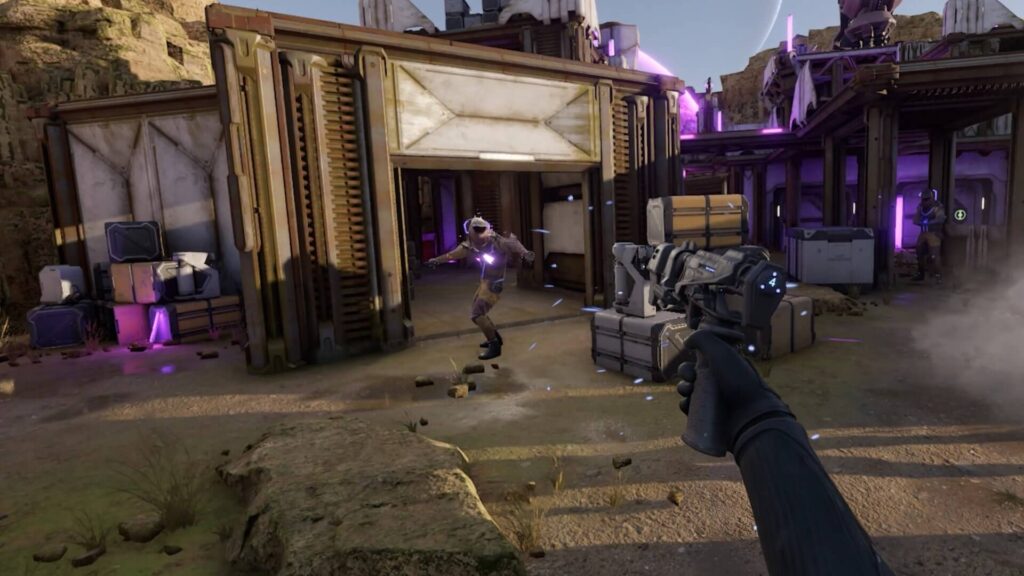
Story, Characters, and Dialogues
Hubris tries to introduce us to the game’s backstory and lore through the game by giving us hints. However, there is so little of them that I didn’t have any motivation for succeeding further into the campaign, nor I had an interest in the game’s plot, which it sadly lacks.
The game’s linear and monotonous story further drained my enthusiasm to delve deeper into the game. I consider this a missed opportunity, as there is a wealth of untapped potential. We are left in the dark about the lore surrounding the “OOO” organization, as well as the identities of our enemies and allies. There is a distinct lack of knowledge in these aspects.
It’s truly disappointing to see such wasted potential, as the game could have been significantly more compelling if it provided the player with more intricate world details through discoveries and dialogues. Speaking of dialogues, despite the excellent voice quality, the voice actors usually come across as lifeless.
The game’s dialogues are not engaging, which is a big letdown. Moreover, there were times when I had to wait awkwardly for several seconds before the dialogue started in a scene.
All of these coupled aspects result in a dull and unengaging story, where players don’t care about any of the characters, as they just lack emotion. The game tries to put the player in an interesting world but falls short in terms of doing that.
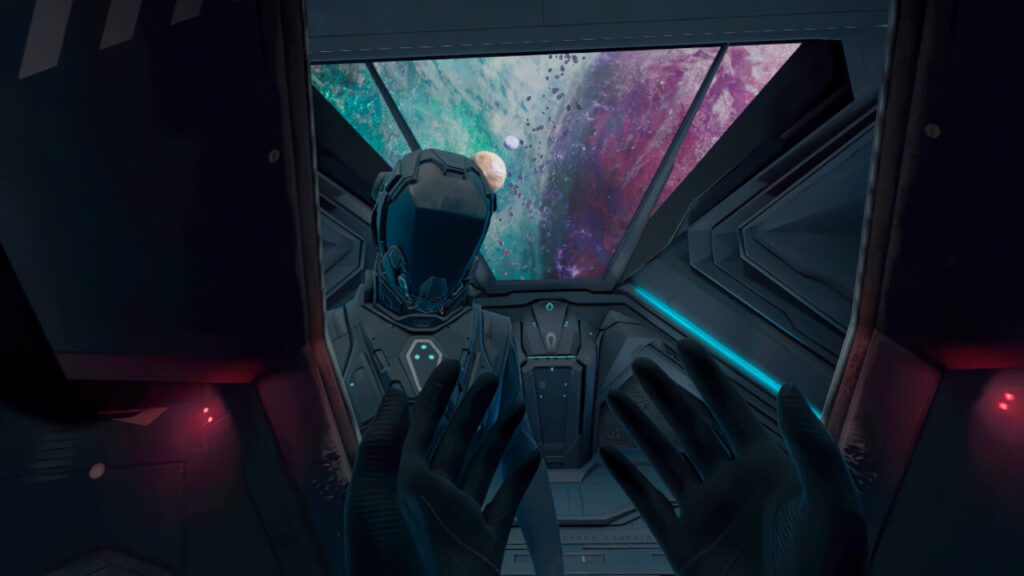
Music and Ambience
Hubris’s ambiance soundtrack dynamically changes throughout the gameplay. It is decent and well-implemented, and it contributes to enhancing immersion when playing the game.
However, as I now think about that, I cannot recall any memorable music playing during my playthrough. While the ambient soundtrack is there and decent, there wasn’t any actual music current in the game, which is a big letdown.

Performance
Despite acknowledging earlier that the graphics in the game are impressive for the Quest platform, it’s hard to ignore the noticeable sacrifices developers had to make, which can sometimes disrupt the gameplay.
One notable and relatively non-disruptive “issue” is the implementation of fixed-foveated rendering, seemingly a significant power-saving measure for developers. However, it’s quite apparent (even in recordings or screenshots) that the screen edges suffer from noticeable pixelation.
What was not understandable is the display artifacts on the screen. One highly noticeable problem that I encountered was the presence of shaking waves around the Field of View, which occasionally disrupted the gameplay. A similar problem occurs around the player’s hands when in motion.
One thing I noticed is that the game has noticeable performance jumps. Just a heads up, I played before the v55 update, which was supposed to improve the power of Quest 2 by more than 20%. The FPS drops might also be because I was recording videos while playing, so it shouldn’t be a big issue for casual players.
If you are eager to play Hubris, we highly recommend waiting for Meta Quest 3 which will release this fall – This headset is set to bring two times more graphic and processor power, which will lead to better performance and more beautiful graphics.

Conclusion
Hubris, despite its much-anticipated launch on Meta Quest 2 and Pro, falls short of expectations. While the game’s graphics are commendable for the Quest platform, they fail to capture the stunning visual experience offered on PCVR.
The gameplay mechanics, particularly swimming, are well-executed, but the climbing and jumping aspects could use improvement. The combat system lacks polish, with the overpowered pistol overshadowing other weapons and the reloading mechanic proving to be more of a nuisance than an innovative feature.
The game’s AI and enemy characters lack depth, making the combat experience less engaging. The crafting and upgrading system is tedious and lacks the immediate visual gratification found in other games.
The storyline and characters are underdeveloped, failing to draw players into the game’s world. The ambient soundtrack, while decent, lacks memorable music.
Lastly, despite the impressive graphics for the Quest platform, the game suffers from performance issues and display artifacts. While Hubris has potential, it requires significant improvements to truly shine in the VR gaming landscape.
The game lasts for about 5-6 hours, maybe 7 if you like exploring or facing challenges repeatedly. However, considering its average quality, it just doesn’t justify the $29.99 price tag.
The Review
Hubris on Meta Quest 2
Hubris on Meta Quest 2 shines with its graphics compared to other Quest games, and swimming mechanics, but dissapoints with lackluster combat system, unengaging storyline, and lack of music. Despite some innovative gameplay mechanics and impressive levels for the Quest platform, the game is marred by performance issues, display artifacts and a lack of depth in characters and AI. Significant improvements are needed for it to stand out in the VR gaming landscape.
PROS
- Decent Quest-wise Graphics
- Awesome Swimming Mechanics
- Innovative Gameplay Mechanics
- Immersive Ambient Soundtrack
- Impressive Level Design
CONS
- Unreliable Climbing
- Poor Combat System
- The Lack of Need to use Other Weapons
- Dull Enemies
- Unadvanced AI
- Tedious Crafting System
- Unsatisfying Weapons' Upgrades
- Unengaging Storyline
- Dull Dialogues
- Lack of Music
- Performance Issues
- Display Artifacts
Hubris on Meta Quest 2 DEALS
We collect information from many stores for best price available



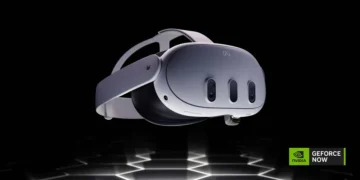









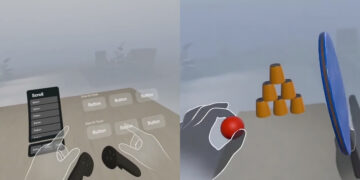



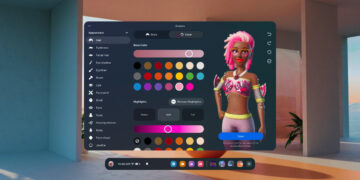


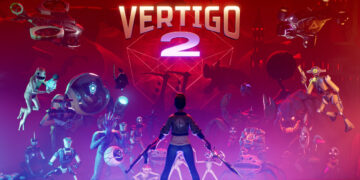















It is misleading to complain about performance stutters while simultaneously recording the gameplay. Glad you mentioned it, but it invalidates that part of the review.
I tested the performance both with and without recording, and I encountered some performance issues in both scenarios. However, the issues were slightly less noticeable when I was not recording. With the v55 update promising a significant 20% performance upgrade, I expect that it will address these recording-related issues. Once I receive the update (as I’m currently on v54), I will update my review accordingly.